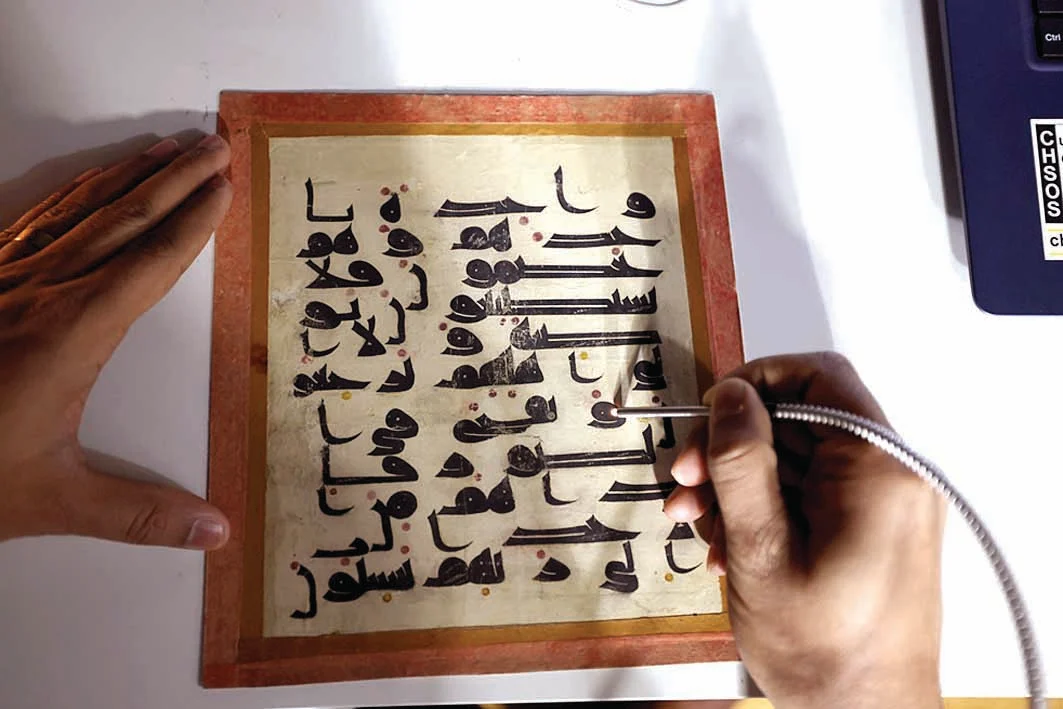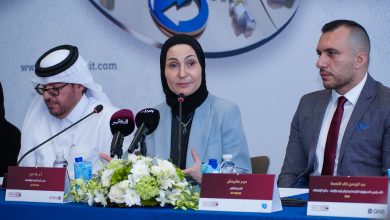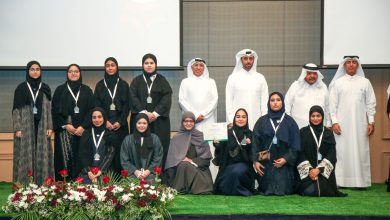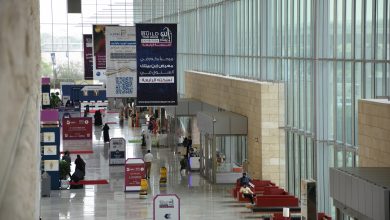QNL, QEERI Launch Project to Develop Global Solution for Protecting Islamic Manuscripts
مشروع تعاون بين المكتبة الوطنية ومعهد قطر لبحوث البيئة والطاقة لصون المخطوطات الإسلامية حول العالم
QNA
Doha: Qatar National Library (QNL) and Hamad Bin Khalifa Universitys Qatar Environment and Energy Research Institute (QEERI) have signed a collaborative research agreement to create a methodology that conservators worldwide can leverage to protect Islamic manuscripts against degradation, positioning Qatar as a pioneer in Islamic manuscript preservation.
In a statement on Tuesday, QNL indicated that this project falls in line with Qatar Foundation’s multiversity approach, enhancing understanding of historical ink, pigment production, and the trading routes for rare pigments that were in use from the 10th century CE onwards.
Its impact will also extend to historians and codicologists, fostering new partnerships and networks, primarily in Asian countries such as Iran, Malaysia and Indonesia.
Under the project, the Library’s scientific laboratory and QEERI’s Corrosion Center will unite to conduct experiments and develop new methodologies to stabilize inks and metal-containing pigments used in old Islamic illuminated manuscripts.
The collaboration will lead to a better understanding of the degradation process, enabling both QEERI and Qatar National Library’s IFLA Preservation and Conservation Regional Centre, to better develop ways to retard the degradation process thus helping to preserve important historical artifacts.
Commenting on the initiative, Executive Director of QNL Tan Huism, said the project embodies the values that have guided the Library throughout its journey since foundation. “The agreement further cements the Librarys role as a guardian of the regions heritage and as an institution committed to promoting innovation and continuous learning, values that lie at the core of our mission.” Head of Preservation and Conservation at the Library Maxim Nasra said the project presents unique challenges but also brings significant benefits. “Unlike Western documents, Islamic manuscripts pose a unique set of challenges in terms of the prevalence of metallic inks and distinct recipes, as well as the extensive use of verdigris in painting and illumination. This project aims to create a protective methodology for historical Islamic pieces that not only benefits QNL, but also global institutions with valuable Islamic heritage documents.” QEERI’s Acting Executive Director Dr. Tareq Al Ansari said his organization was proud to contribute to the development of methodologies that will protect these invaluable manuscripts. “Through our collaboration with QNL, we are pioneering efforts to understand and mitigate the degradation process, ensuring the preservation of our rich heritage for generations to come,” he added.
Senior Research Director of the Corrosion Center at QEERI Dr. Hanan Farhat explained that corrosion impacts all aspects of life, including heritage documents. “This collaboration with QNL will help our scientists understand the degradation mechanisms of iron-gall ink and develop methodologies to slow this degradation, which will help preserve these valuable manuscripts. The beauty of this project is that it combines science, art, and heritage,” she noted.
The project started on 18 February at QNL with a five-day workshop that brought together experts from both organizations.
The unstable iron-gall ink represents one of the primary factors behind the chemical process responsible for the degradation of heritage documents, impacting a quarter of all Islamic manuscripts worldwide. However, the process hasnt attracted much research, with fewer than 20 scientific papers published on iron-gall ink in Arabic manuscripts.
قنا
الدوحة: وقعت مكتبة قطر الوطنية ومعهد قطر لبحوث البيئة والطاقة، التابع لجامعة حمد بن خليفة، اتفاقا لمشروع بحثي مشترك يهدف إلى إنشاء منهجية مبتكرة تمكن أخصائيي الترميم في جميع أنحاء العالم من صون كنوز التراث الإسلامي من الوثائق والمخطوطات من خطر التدهور.
وأوضحت مكتبة قطر الوطنية في بيان لها اليوم، أن هذا الاتفاق يرسخ دور دولة قطر الريادي في صون المخطوطات الإسلامية والمحافظة عليها، ويتسق مع نهج التخصصات المتعددة الذي تطبقه مؤسسة قطر، حيث سيساهم المشروع في تعزيز فهم طبيعة الحبر القديم المستخدم في المخطوطات وعملية إنتاج الأصباغ ومسارات تجارة الأصباغ النادرة التي كانت مستخدمة في القرن العاشر الميلادي والعصور اللاحقة.
وسوف يمتد تأثير هذا التعاون أيضا إلى المؤرخين العاملين في هذا المجال وعلماء المخطوطات، حيث سيسفر عن إبرام شراكات وتكوين شبكات تعاون بحثية جديدة، لا سيما في الدول الآسيوية مثل إيران وماليزيا وإندونيسيا.
وفي إطار هذا الاتفاق، سيتعاون مختبر الحفظ والصيانة في المكتبة ومركز التآكل في معهد قطر لبحوث البيئة والطاقة لإجراء التجارب وابتكار منهجيات وطرق جديدة لتثبيت الأحبار والأصباغ المصنوعة من المعادن والمستخدمة في زخارف المخطوطات الإسلامية القديمة.
ويقود هذا التعاون المشترك إلى فهم أفضل لعملية التدهور، بما يمكن معهد قطر لبحوث البيئة والطاقة ومكتبة قطر الوطنية، بصفتها مركز /الإفلا/ الإقليمي لصون المواد التراثية والحفاظ عليها في الشرق الأوسط، من ابتكار المنهجيات والطرق التي توقف عملية التدهور وتساعد في حفظ الوثائق التاريخية المهمة.
وتعليقا على هذه المبادرة، أكدت السيدة هوسم تان، المدير التنفيذي لمكتبة قطر الوطنية، أن المشروع يجسد القيم التي تتبناها المكتبة منذ تأسيسها، وقالت:” تعزز الاتفاقية دور المكتبة في صون تراث المنطقة ومكانتها بصفتها مؤسسة ملتزمة بتعزيز الابتكار والتعلم المستمر، وهي القيم التي تشكل جوهر رسالتنا”.
ومن جهته أوضح مكسيم نصرة، رئيس قسم صيانة مقتنيات المكتبة والمحافظة عليها، أن المشروع يتعامل مع تحديات فريدة من نوعها، لكنه سيجلب في الوقت نفسه فوائد كبيرة للمشاركين والمعنيين بهذا المجال.. مشيرا إلى أن انتشار استخدام الأحبار المعدنية وغيرها من المكونات الأخرى الخاصة، والاستخدام المكثف لصبغ الزنجار في الرسم والزخرفة في المخطوطات الإسلامية أدى إلى ظهور تحديات فريدة في المخطوطات الإسلامية تختلف عن تلك التي تواجهها المخطوطات الغربية.
وقال إن هذا المشروع التعاوني يهدف إلى إيجاد منهجية وقائية للمخطوطات الإسلامية التاريخية، لا تعود بالنفع على مكتبة قطر الوطنية فقط، بل أيضا على المؤسسات العالمية التي تمتلك وثائق التراث الإسلامي القيمة”.
وحول هذا التعاون، علق الدكتور طارق الأنصاري، المدير التنفيذي بالإنابة لمعهد قطر لبحوث البيئة والطاقة، قائلا:” يفخر معهد قطر لبحوث البيئة والطاقة بالمساهمة في ابتكار منهجية تؤدي إلى حماية هذه المخطوطات التي لا تقدر بثمن.. مشيرا إلى أن هذا التعاون سيمكننا من قيادة الجهود الرامية إلى فهم عملية التدهور، والتخفيف من آثارها، وضمان الحفاظ على تراثنا العريق والفريد وصونه للأجيال القادمة”.
ومن جانبها قالت الدكتورة حنان فرحات، مدير أبحاث أول بمركز التآكل بمعهد قطر لبحوث البيئة والطاقة:” يؤثر التآكل على كل شيء في حياتنا، ومن ذلك الوثائق التراثية. سيتمكن علماؤنا عبر التعاون مع مكتبة قطر الوطنية من فهم آليات تحلل الحبر الحديدي، وابتكار المنهجيات والوسائل لإبطاء هذا التحلل، والحفاظ على هذه المخطوطات القيمة. وتكمن أهمية هذا التعاون في أنه يجمع بين العلم والفن والتراث”.
جدير بالذكر أن المشروع بدأ بالفعل وأقيمت في إطاره ورشة عمل في مكتبة قطر الوطنية لمدة 5 أيام بمشاركة خبراء من المكتبة ومعهد قطر لبحوث البيئة والطاقة.
يشار إلى أن الحبر الحديدي غير المستقر يمثل أحد العوامل الأساسية وراء العملية الكيميائية المسؤولة عن تدهور الوثائق التراثية، الأمر الذي يؤثر على ربع المخطوطات الإسلامية حول العالم. وبالرغم من هذا التأثير الفادح لم تكن هذه العملية موضع تركيز الكثير من البحوث العلمية، إذ نشرت فقط أقل من 20 ورقة علمية حول استخدام الحبر الحديدي في المخطوطات العربية.




